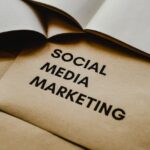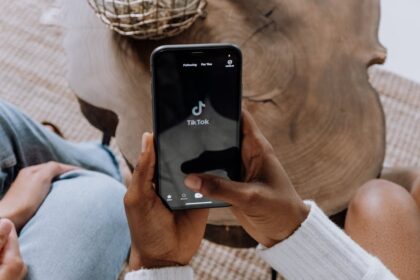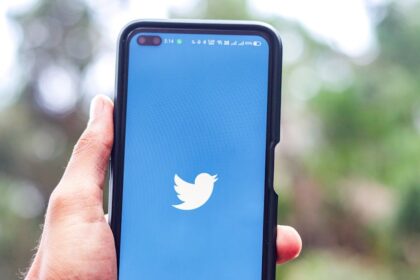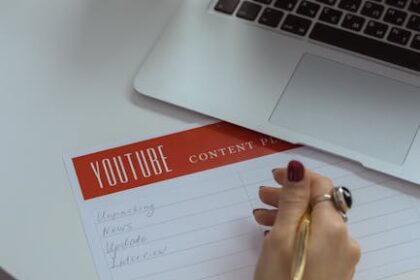Leveraging LinkedIn Ads for Precision B2B Decision Maker Targeting
LinkedIn stands unparalleled as a professional networking platform, offering a unique ecosystem for B2B marketers to connect directly with decision-makers. Unlike other social media channels, LinkedIn’s intrinsic professional context means users are often in a business mindset, actively seeking industry insights, professional development, and solutions to their organizational challenges. This inherent intent makes LinkedIn Ads an indispensable tool for B2B companies aiming to penetrate the right accounts and influence the right individuals within those accounts. The platform’s robust data, built on millions of professional profiles and company pages, provides an extraordinary foundation for highly granular targeting, ensuring marketing spend reaches the precise individuals who hold the power to approve purchases and drive strategic initiatives within their organizations. Understanding the nuances of this platform, from its diverse ad formats to its sophisticated targeting capabilities, is paramount for any B2B entity striving for efficient lead generation, brand building, and ultimately, revenue growth. The journey from initial awareness to final conversion for a B2B decision-maker is complex, often involving multiple stakeholders and extensive research. LinkedIn Ads empowers marketers to be present at every crucial touchpoint, delivering relevant messages that resonate with the specific needs and pain points of senior-level professionals, procurement teams, and C-suite executives, transforming passive scrolling into active engagement and qualified opportunities.
Understanding the B2B Decision Maker Journey on LinkedIn
The B2B buying journey is rarely linear, particularly when targeting high-level decision-makers. These individuals are typically inundated with information, operate under tight schedules, and are often part of a larger buying committee. Their journey on LinkedIn is multifaceted, encompassing research, peer validation, thought leadership consumption, and solution discovery. At the top of the funnel (TOFU), decision-makers might be passively consuming content related to industry trends, emerging technologies, or best practices. They’re identifying problems or opportunities within their organizations without necessarily looking for a specific vendor. Here, LinkedIn Ads focusing on brand awareness, thought leadership, and educational content, like e-books or webinars, can subtly introduce your brand as a credible resource. As they move to the middle of the funnel (MOFU), they begin to explore potential solutions and compare options. They’re more receptive to content that addresses specific challenges, offers case studies, or provides product demos. This is where Sponsored Content, especially video ads showcasing value propositions or problem-solving scenarios, and Message Ads offering personalized content, become highly effective. At the bottom of the funnel (BOFU), decision-makers are actively evaluating vendors and are close to making a purchase. They require detailed information, direct consultations, and clear calls to action. Lead Gen Forms integrated with LinkedIn Ads are invaluable here, streamlining the conversion process by pre-filling forms with profile data, reducing friction.
Moreover, B2B decision-makers often operate within a professional bubble, valuing insights from peers and trusted industry voices. LinkedIn’s environment facilitates this by allowing them to follow influential leaders, join professional groups, and engage with content shared by their connections. This organic activity provides marketers with invaluable insights into their interests and pain points, which can then inform highly targeted ad campaigns. For instance, if a specific group discusses challenges related to cybersecurity, an ad promoting a cybersecurity solution tailored to that industry’s compliance needs will resonate far more strongly than a generic advertisement. Understanding that decision-makers are not just buying a product or service but solving a strategic business problem is fundamental. Their motivations are tied to improving efficiency, reducing costs, driving innovation, mitigating risks, or increasing revenue. LinkedIn Ads, when designed with this deep understanding, can position your offerings not merely as products but as strategic solutions that directly impact these core business objectives. The key is to map your ad creative and targeting to each stage of this complex journey, nurturing decision-makers with relevant content until they are sales-ready.
Core LinkedIn Ad Formats for B2B Engagement
LinkedIn’s diverse array of ad formats provides flexibility to achieve various marketing objectives, from broad awareness to direct lead generation. Each format offers unique advantages for reaching B2B decision-makers at different stages of their buying journey.
-
Sponsored Content (Native Ads): These ads appear directly in the LinkedIn feed, blending seamlessly with organic content. This native placement increases engagement as users perceive them as less intrusive.
- Single Image Ads: Highly versatile, excellent for driving traffic to landing pages, promoting content (e-books, whitepapers), or announcing product updates. They allow for a compelling visual and concise ad copy. Effective for conveying a clear, singular message or value proposition directly relevant to a decision-maker’s challenges.
- Carousel Ads: Ideal for showcasing multiple product features, telling a sequential story, highlighting different solutions for various pain points, or presenting case studies in an engaging, swipeable format. For B2B, carousels can illustrate complex processes or diverse applications of a service.
- Video Ads: Exceptionally powerful for capturing attention and conveying complex messages quickly. B2B decision-makers are increasingly consuming video content. Use video for product demos, client testimonials, thought leadership interviews, or explaining intricate solutions. They build trust and rapport more effectively than static images.
- Event Ads: Promote webinars, virtual conferences, or in-person industry events directly within the feed. Decision-makers often attend such events for networking and learning, making this a highly relevant format for engaging them and capturing registrations.
- Document Ads: A newer format allowing users to download a document (e.g., whitepaper, case study, research report) directly from the LinkedIn feed, without leaving the platform. This reduces friction for content consumption and is highly effective for MOFU content designed to educate and qualify leads. It allows decision-makers to quickly access valuable information on the go.
-
Message Ads (formerly Sponsored InMail): These ads are delivered directly to a decision-maker’s LinkedIn inbox, providing a highly personalized and private communication channel.
- Key Advantage: High open rates due to the direct delivery and the professional context of LinkedIn messages. They allow for longer-form messaging than feed ads.
- Best Use Cases: Delivering exclusive content, inviting to webinars, offering personalized demos, or direct outreach for sales follow-up. The personalization token feature allows you to greet recipients by name, increasing relevance.
- Crucial for B2B: Decision-makers appreciate direct, relevant communication that respects their time. Message Ads, when well-crafted and not spammy, can cut through the noise. They should always offer clear value and a strong call-to-action.
-
Conversation Ads: An interactive, choose-your-own-path version of Message Ads.
- Functionality: Allows marketers to create multiple-choice prompts within the message, guiding the recipient through a customized experience based on their selections.
- B2B Relevance: Excellent for qualifying leads, segmenting audiences, or allowing decision-makers to self-select content that is most relevant to their specific needs or challenges. For example, “What’s your biggest challenge with X?” with options leading to tailored resources. This interactive approach can significantly boost engagement and provide valuable insights into prospect interests.
-
Text Ads: Simple, pay-per-click ads that appear on the right-hand rail or at the top of the LinkedIn desktop page.
- Characteristics: Small, text-based, with a limited character count.
- B2B Application: Primarily for driving website traffic or increasing brand awareness through consistent visibility. While less visually engaging than Sponsored Content, their prominent placement on desktop can be effective for low-cost, high-volume click generation, particularly for very specific, niche keywords. They are a good supplementary format for reinforcing your presence.
-
Dynamic Ads: Personalized ads that automatically pull in profile data (like profile photo, company name) to create highly relevant advertisements.
- Follower Ads: Encourage users to follow your company page, increasing your organic reach and thought leadership potential with decision-makers.
- Spotlight Ads: Drive traffic to a landing page, prominently featuring the user’s profile picture or other personalized elements. Great for promoting events, product launches, or content downloads.
- Content Ads: Promote and encourage downloads of content (e.g., whitepapers, case studies) with personalized calls to action.
- B2B Advantage: The personalization makes these ads stand out in the feed and can significantly increase click-through rates, as decision-makers are more likely to engage with content that feels directly relevant to them.
-
Lead Gen Forms: A powerful feature that can be integrated with Sponsored Content and Message Ads.
- Functionality: When a decision-maker clicks on your CTA, a form pre-fills with their LinkedIn profile data (name, email, company, job title, etc.), making it incredibly easy for them to convert with a single click.
- B2B Impact: Reduces friction dramatically. For busy decision-makers, eliminating the need to manually type in information significantly increases conversion rates. This is essential for capturing qualified leads efficiently.
Choosing the right ad format depends on your campaign objective, the specific stage of the B2B decision-maker journey you’re targeting, and the type of content you have available. A comprehensive LinkedIn Ads strategy often involves a mix of these formats, each playing a distinct role in nurturing prospects from initial awareness to conversion.
Precision Targeting Strategies for B2B Decision Makers
The true power of LinkedIn Ads for B2B lies in its unparalleled targeting capabilities. Marketers can zero in on specific companies, roles, and professional attributes, ensuring ad spend is maximized by reaching only the most relevant decision-makers.
-
Matched Audiences: The Cornerstone of B2B Targeting
- Website Retargeting: Target decision-makers who have previously visited specific pages on your website. This is crucial for nurturing prospects already familiar with your brand. For example, retargeting visitors to a pricing page with a special offer or a case study.
- Account Targeting (Account-Based Marketing – ABM): Upload a list of target company names (e.g., from your CRM) to serve ads specifically to employees within those organizations. This is the ultimate precision for ABM strategies, ensuring your message reaches the decision-making unit within high-value accounts. LinkedIn matches these companies against its database, providing unparalleled accuracy.
- Contact List Upload: Upload a list of specific contacts (e.g., from your sales team’s outreach list or event attendees) to target those exact individuals on LinkedIn. This is highly effective for nurturing existing leads, re-engaging dormant contacts, or adding a digital touchpoint to direct sales efforts. LinkedIn hashes the data for privacy.
- Lookalike Audiences: Once you have a high-performing Matched Audience (e.g., website converters or high-engagement contacts), LinkedIn can generate a lookalike audience of similar professionals, expanding your reach to new, relevant prospects. This is excellent for scaling successful campaigns.
-
Audience Attributes: Granular Professional Demographics
- Job Title: Target specific roles (e.g., “VP of Marketing,” “Chief Financial Officer,” “Head of IT Infrastructure”). This is perhaps the most direct way to identify decision-makers. LinkedIn’s job title data is incredibly accurate.
- Seniority: Refine targeting by seniority level (e.g., “Director,” “VP,” “CXO,” “Owner”). Essential for ensuring your message reaches individuals with buying power.
- Job Function: Target broader departments or professional disciplines (e.g., “Operations,” “Sales,” “Engineering,” “Human Resources”). Useful when the exact job title varies but the function remains consistent across organizations.
- Company Name: Directly target employees of specific companies, whether they are competitors, partners, or major players in your industry.
- Company Size: Filter by the number of employees. Crucial for B2B, as solutions for small businesses differ greatly from those for large enterprises.
- Industry: Target decision-makers within specific industries (e.g., “Healthcare,” “Financial Services,” “Manufacturing,” “Software”). This ensures industry-specific messaging resonates.
- Skills: Target individuals based on skills listed on their profiles (e.g., “Project Management,” “Data Analytics,” “Cybersecurity”). This reflects specific capabilities or challenges they might face.
- Groups: Target members of specific LinkedIn Groups. If a group is highly relevant to your niche, its members are likely interested in solutions related to that topic.
- Education: Target based on degrees, fields of study, or universities. While less direct for decision-making, it can be useful for niche industries or for understanding professional backgrounds.
- Interests (Member Interests and Traits): Target based on the topics, publications, or industries members follow or engage with on LinkedIn. This offers a glimpse into their professional curiosities and pain points.
-
Exclusion Targeting: Just as important as inclusion, exclusion targeting allows you to prevent your ads from showing to irrelevant audiences (e.g., current customers, competitors, low-level employees, or irrelevant job functions). This refines your audience further and prevents wasted ad spend.
-
Boolean Logic in Targeting: Combine targeting criteria using “AND,” “OR,” and “NOT” to create highly precise audiences. For example, “Job Title: VP AND (Job Function: Sales OR Marketing) NOT (Company: [Competitor Name]).” This advanced capability allows for incredibly specific audience segmentation.
When building your target audience, start broad with key attributes like job title or seniority, then layer on additional filters such as company size, industry, or specific skills to narrow down to the most qualified decision-makers. Always test different audience segments to see which performs best, and continually refine your targeting based on campaign performance data. The precision of LinkedIn’s targeting transforms advertising from a broad outreach to a strategic conversation with the right individuals.
Campaign Objectives and Funnel Alignment
Successful B2B advertising on LinkedIn begins with clearly defined campaign objectives, directly aligned with the stages of the B2B sales funnel. LinkedIn Campaign Manager offers various objectives, each optimized for specific outcomes. Understanding which objective to choose for each stage of the decision-maker journey is crucial for maximizing ROI and achieving strategic marketing goals.
Awareness Stage (Top of Funnel – TOFU): At this stage, decision-makers are problem-aware but not necessarily solution-aware. Your goal is to introduce your brand, establish thought leadership, and generate interest without directly selling.
- Objective: Brand Awareness.
- Purpose: Maximize the number of impressions among your target audience to increase familiarity with your brand, products, or services.
- Ad Formats: Primarily Video Ads, Single Image Ads, and Carousel Ads, often featuring high-quality, educational content or brand stories.
- Metrics: Impressions, reach, brand recall (if measured via surveys).
- B2B Context: For decision-makers, this involves showcasing your company as an industry leader, innovator, or trusted advisor. Content could be macro-level industry reports, insights into future trends, or high-level problem statements relevant to their role.
Consideration Stage (Middle of Funnel – MOFU): Decision-makers are now exploring potential solutions to their identified problems. They are looking for more in-depth information, comparisons, and evidence of efficacy.
-
Objective: Website Visits.
- Purpose: Drive relevant traffic to your website, blog posts, resource centers, or solution pages.
- Ad Formats: Sponsored Content (Single Image, Carousel, Video) with clear calls to action to “Learn More,” “Read Now,” or “Explore Solutions.”
- Metrics: Clicks, Click-Through Rate (CTR), cost per click (CPC).
- B2B Context: Content here should be solution-oriented – whitepapers, detailed case studies, e-books, webinar registrations, or interactive tools that help decision-makers understand how your offering addresses their specific pain points.
-
Objective: Engagement.
- Purpose: Increase likes, comments, shares, and followers on your LinkedIn content or company page.
- Ad Formats: Sponsored Content (all types), Dynamic Follower Ads.
- Metrics: Engagement rate, social actions (likes, comments, shares), follower growth.
- B2B Context: Encourages decision-makers to interact with your thought leadership, participate in discussions, and see your brand as a vibrant, insightful entity within their professional network. High engagement can also serve as social proof.
-
Objective: Video Views.
- Purpose: Maximize video consumption, crucial for complex B2B solutions that benefit from visual explanation.
- Ad Formats: Video Ads.
- Metrics: Video views, completion rates (25%, 50%, 75%, 100%), cost per view.
- B2B Context: Useful for product demos, client testimonials, executive interviews, or animated explainers that break down intricate processes for busy decision-makers. High view completion rates indicate strong interest.
Conversion Stage (Bottom of Funnel – BOFU): At this critical stage, decision-makers are evaluating specific vendors and are ready to make a purchase decision. The goal is to capture qualified leads and drive direct sales actions.
-
Objective: Lead Generation.
- Purpose: Collect contact information from qualified prospects directly on LinkedIn using Lead Gen Forms.
- Ad Formats: Sponsored Content and Message Ads integrated with Lead Gen Forms.
- Metrics: Leads, Cost Per Lead (CPL), Lead Form Completion Rate.
- B2B Context: This is highly effective for offering high-value assets like free trials, personalized demos, detailed consultations, or requests for quotes. The pre-filled nature of Lead Gen Forms significantly reduces friction for busy decision-makers, leading to higher conversion rates.
-
Objective: Website Conversions.
- Purpose: Drive specific actions on your website, such as demo requests, content downloads (that require form fill on your site), or product sign-ups. Requires the LinkedIn Insight Tag to track conversions.
- Ad Formats: Sponsored Content (all types), Text Ads.
- Metrics: Conversions, Cost Per Conversion, Conversion Rate.
- B2B Context: Ideal when you prefer to capture leads directly on your landing pages, allowing for more control over the user experience and integration with your CRM/marketing automation systems.
-
Objective: Job Applicants (If applicable).
- Purpose: Attract top talent for critical B2B roles. While not directly for lead generation, decision-makers are often involved in hiring, and seeing your brand promote desirable roles can subtly reinforce your company’s strength and growth.
Mapping your content and ad formats to these objectives and funnel stages is paramount. A decision-maker at the awareness stage needs different messaging than one at the conversion stage. A well-aligned strategy ensures that every ad impression and click contributes meaningfully to moving prospects closer to a sales conversation.
Crafting Compelling Ad Creative for B2B Decision Makers
Ad creative for B2B decision-makers on LinkedIn must be sharp, insightful, and directly relevant to their professional world. These individuals are not scrolling for entertainment; they are looking for solutions, insights, and opportunities to improve their business. Your creative needs to cut through the noise with clarity and value.
-
Understand Their Pain Points and Aspirations:
- Problem-Solution Focus: Start by identifying a common challenge your target decision-maker faces. Then, immediately present your offering as the clear, effective solution. For example, instead of “Our CRM is great,” try “Struggling with fragmented customer data? See how our CRM unifies your sales and marketing efforts for clearer insights.”
- Aspiration-Driven: Tap into their goals: “Achieve 20% growth this quarter,” “Streamline your supply chain,” “Reduce operational costs by 15%.” Frame your solution as the path to their desired business outcomes.
- Role-Specific Relevance: Tailor your message to their specific role. A CFO cares about ROI and cost savings, while a Head of HR focuses on talent retention and employee experience. Generic messages rarely resonate with senior professionals.
-
Headline and Body Copy: Precision and Value:
- Headlines (Max 70 characters visible): Must be impactful and clear. Use keywords relevant to their industry or role. Ask a question, state a benefit, or present a compelling statistic.
- Good: “Unlock X% More Leads with AI-Driven Automation.”
- Better: “C-Suite: Drive Growth. Reduce Waste. Our Solution Delivers.”
- Poor: “Innovative Tech Solution Available Now.”
- Body Copy (Short text above creative, Long text below):
- Hook: Start with a strong opening sentence that grabs attention, often by acknowledging a pain point or promising a significant benefit.
- Elaborate on Value: Clearly articulate 2-3 key benefits, not features. How does your solution save time, money, reduce risk, or increase efficiency for the decision-maker and their organization? Use numbers and quantifiable results where possible.
- Credibility: Briefly mention your expertise, industry recognition, or client success (e.g., “Trusted by Fortune 500 leaders,” or “Award-winning platform”).
- Conciseness: Decision-makers are busy. Get to the point. Use bullet points or short paragraphs for readability. For Message Ads, you have more space, but still, respect their time.
- Headlines (Max 70 characters visible): Must be impactful and clear. Use keywords relevant to their industry or role. Ask a question, state a benefit, or present a compelling statistic.
-
Visuals: Professional, Relevant, and High-Quality:
- Images: Use professional, high-resolution images that are relevant to your industry or solution. Avoid generic stock photos. Consider:
- Infographics demonstrating data or processes.
- Screenshots of your software interface (clean and professional).
- Team photos (authentic, showcasing diversity and expertise).
- Industry-specific imagery (e.g., a factory floor for manufacturing tech).
- Videos:
- Keep it Short: Under 60 seconds is often ideal for initial engagement. Longer videos can be used for deeper MOFU/BOFU content.
- Strong Hook: The first 5 seconds are critical.
- Professional Production: High-quality audio and visuals are non-negotiable for a B2B audience.
- Subtitles: Many decision-makers watch videos without sound, especially on mobile.
- Storytelling: Showcase a problem, your solution, and the positive outcome. Client testimonials or expert interviews are highly effective.
- Images: Use professional, high-resolution images that are relevant to your industry or solution. Avoid generic stock photos. Consider:
-
Calls to Action (CTAs): Clear and Actionable:
- Your CTA should be unambiguous and align with the stage of the funnel.
- Awareness: “Learn More,” “Watch Now,” “Read Article.”
- Consideration: “Download E-book,” “Register for Webinar,” “View Demo.”
- Conversion: “Get a Quote,” “Request Demo,” “Contact Us,” “Start Free Trial.”
- Make sure the landing page experience directly follows the promise of the CTA.
-
Personalization and Trust Signals:
- Dynamic Ads & Message Ads: Leverage LinkedIn’s personalization tokens (e.g.,
[first_name],[company_name]) to make ads feel more direct and relevant. - Thought Leadership: Promote content from key executives or subject matter experts within your company. Decision-makers are more likely to engage with individuals they perceive as industry leaders.
- Social Proof: If using Sponsored Content, allow social actions (likes, comments) to be visible. Positive engagement from peers can influence decision-makers.
- Dynamic Ads & Message Ads: Leverage LinkedIn’s personalization tokens (e.g.,
By meticulously crafting ad creative that directly addresses the needs, challenges, and aspirations of B2B decision-makers, you can significantly increase engagement, click-through rates, and ultimately, conversion rates on LinkedIn. Remember, every element of your ad should reinforce your brand’s professionalism, expertise, and value proposition.
Landing Page Optimization for B2B Conversions
The ad creative and targeting on LinkedIn bring the decision-maker to your virtual doorstep; the landing page is where the conversion happens. A poorly optimized landing page can nullify even the most brilliant LinkedIn Ad campaign, wasting valuable ad spend and squandering potential leads. For B2B decision-makers, a landing page must be a seamless, professional, and highly efficient extension of the ad experience.
-
Relevance and Message Match:
- Ad-to-Page Consistency: The most critical rule. The headline, offer, and visuals on your landing page must directly align with what was promised in the LinkedIn ad. If your ad promotes a “Whitepaper on AI in Finance,” the landing page must immediately confirm that this is exactly what the user will receive. Any disconnect creates confusion and leads to bounces.
- Target Audience Relevance: Ensure the language, tone, and examples used on the landing page are tailored to the B2B decision-maker. Avoid jargon they won’t understand, but don’t oversimplify to the point of appearing unsophisticated. Speak their professional language.
-
Clarity and Value Proposition:
- Above the Fold: Your main value proposition, key benefits, and primary call to action (CTA) should be immediately visible without scrolling. Decision-makers have limited time.
- Concise Copy: Use clear, scannable headlines, subheadings, and bullet points. Avoid dense paragraphs. Focus on “what’s in it for them” and the tangible outcomes your solution delivers.
- Visual Hierarchy: Guide the user’s eye to the most important elements – the value proposition, benefits, and the conversion form/CTA button.
-
Trust and Credibility Signals:
- Social Proof: Include testimonials from recognizable companies, client logos, relevant industry awards, security badges (e.g., “SSL Secure”), or certifications. B2B decision-makers rely heavily on trust and peer validation.
- Case Studies/Success Stories: Link to or briefly highlight how your solution has helped similar businesses achieve quantifiable results.
- Professional Design: A clean, modern, and professional design reinforces your brand’s credibility. Avoid outdated aesthetics, broken links, or slow loading times.
-
Optimized Conversion Forms (if applicable):
- Minimal Fields: For initial lead capture, ask for only essential information (Name, Email, Company, Job Title). Every additional field decreases conversion rates. You can gather more data later in the sales process.
- Pre-filled Forms (via LinkedIn Lead Gen Forms): As mentioned, using LinkedIn’s native Lead Gen Forms for Sponsored Content and Message Ads is incredibly powerful as it pre-fills user data, drastically reducing friction. If you’re driving to your own site, ensure auto-fill is enabled where possible.
- Clear Form Headings: Tell users why you’re asking for the information (“Download Your Free Whitepaper,” “Get Your Custom Demo”).
- Strong CTA Button: Make the button prominent and use action-oriented language (e.g., “Get My Report,” “Request a Demo,” “Start Your Trial”).
-
Mobile Responsiveness:
- A significant portion of LinkedIn users access the platform on mobile devices. Your landing page must be fully responsive, offering a seamless experience across all screen sizes. Text should be legible, images should load quickly, and forms should be easy to complete on a smartphone.
-
Fast Load Times:
- Decision-makers are impatient. Slow loading pages (more than 2-3 seconds) will lead to high bounce rates. Optimize images, leverage caching, and minimize heavy scripts.
-
Clear Next Steps (Post-Conversion):
- What happens after they convert? A clear thank-you page with immediate access to the promised content (if applicable), next steps, or contact information for sales is crucial. This also allows for conversion tracking.
- Consider a subtle cross-sell or invite to connect on LinkedIn post-conversion.
By rigorously optimizing your landing pages for relevance, clarity, trust, and ease of use, you transform ad clicks into valuable B2B leads, ensuring your LinkedIn Ads investment yields maximum returns. Continuously A/B test different elements of your landing page to identify what resonates most effectively with your target decision-makers.
Budgeting and Bidding Strategies for B2B Success
Effective budget allocation and smart bidding strategies are critical for maximizing your return on investment (ROI) from LinkedIn Ads, especially when targeting high-value B2B decision-makers. These audiences are often premium, meaning competition for their attention can be higher, and thus, costs per click or lead can be higher than on other platforms. Strategic planning here is non-negotiable.
-
Understanding LinkedIn’s Bidding Options:
LinkedIn offers several bidding options to suit different campaign objectives and risk tolerances:-
Automated Bidding:
- Maximum Delivery: LinkedIn automatically adjusts your bid to get the most results for your budget. This is often recommended for beginners or for campaigns focused on reach and awareness, where you want to maximize impressions.
- Target Cost (Manual bids, optimized for a target CPL/CPC): You set an average cost you’re willing to pay per key result (e.g., lead or click), and LinkedIn optimizes to stay close to that target. This provides more control while still leveraging LinkedIn’s algorithm.
- Enhanced CPC: LinkedIn attempts to get you more conversions within your manual CPC bid by making slight adjustments.
-
Manual Bidding:
- Cost-per-click (CPC): You set the maximum amount you’re willing to pay for each click. Ideal for driving website traffic or when your primary goal is to get people to your site for further engagement. You have direct control over what you pay per interaction.
- Cost-per-impression (CPM): You set the maximum amount you’re willing to pay for 1,000 impressions. Best for brand awareness campaigns where you want maximum visibility among your target audience, regardless of clicks.
- Cost-per-send (CPS): Specific to Message Ads and Conversation Ads, you pay for each message successfully delivered.
- Cost-per-lead (CPL): Used exclusively with Lead Gen Forms. You bid on the maximum amount you’re willing to pay per lead generated. This is often the preferred bidding strategy for conversion-focused B2B campaigns, as it directly aligns with your desired outcome.
-
-
Budget Types:
- Daily Budget: Set a maximum amount you’re willing to spend per day. Good for ongoing campaigns and consistent spend.
- Lifetime Budget: Set a total amount for the entire duration of the campaign. LinkedIn will optimize daily spend to exhaust the budget evenly over the campaign period. Useful for fixed-term promotions or events.
-
Strategic Budget Allocation:
- Funnel-Based Allocation: Don’t put all your budget into BOFU (conversion) campaigns. A balanced approach is crucial for nurturing decision-makers.
- TOFU (Awareness/Consideration): Allocate 30-40% of your budget to reach a wider, relevant audience with educational content, building brand recognition. Use CPM or Automated Bidding.
- MOFU (Consideration/Engagement): Allocate 30-40% to engage those who are showing interest, driving them to deeper content or specific solution pages. Use CPC or Target Cost.
- BOFU (Conversion): Allocate 20-30% to capture qualified leads from those ready to convert. Use CPL or Website Conversions with Target Cost.
- Testing Budgets: Start with a modest budget for new campaigns or audience segments to test performance before scaling up. Allow enough budget for campaigns to exit the “learning phase” (typically 7-14 days) and for LinkedIn’s algorithm to optimize.
- Minimum Spend: LinkedIn requires a minimum daily budget (e.g., $10 USD for most objectives, higher for Message Ads). Ensure your budget allows for consistent delivery.
- Funnel-Based Allocation: Don’t put all your budget into BOFU (conversion) campaigns. A balanced approach is crucial for nurturing decision-makers.
-
Optimizing Bidding for B2B Decision Makers:
- Start with CPL for Lead Gen Forms: If your primary objective is lead generation, using CPL bidding with Lead Gen Forms often provides the best balance of control and performance, directly optimizing for your desired outcome.
- Monitor Suggested Bids: LinkedIn Campaign Manager provides suggested bid ranges. While not absolute, these can give you an idea of the market rate for your target audience.
- Patience and Iteration: Don’t make drastic bid changes too frequently. Allow campaigns time to gather data. Based on performance (CPL, CPA, CTR), adjust bids incrementally.
- Factor in Lead Quality: A lower CPL isn’t always better if the leads are unqualified. Your ultimate goal is a low Cost Per Qualified Lead or Cost Per Opportunity. Integrate LinkedIn data with your CRM to track lead quality and sales outcomes.
- Bid based on Value: Understand the lifetime value (LTV) of a B2B customer. If a single closed deal is worth hundreds of thousands or millions, you can justify a higher CPL than for a consumer product. Your acceptable CPL should be a fraction of your customer acquisition cost (CAC).
- Competitor Analysis: While you can’t see competitors’ bids directly, observing their ad frequency and content can give clues to their investment levels.
By strategically planning your budget and choosing the right bidding approach for each campaign objective, you can ensure your LinkedIn Ads effectively reach B2B decision-makers, driving not just leads, but qualified leads that contribute to your business’s bottom line. Continuous monitoring and optimization are key to long-term success.
Measurement and Reporting for B2B Success
Measuring the performance of your LinkedIn Ads is critical for demonstrating ROI, optimizing campaigns, and making informed decisions. For B2B marketers, reporting extends beyond simple clicks and impressions to focus on lead quality, sales pipeline contribution, and ultimate revenue impact.
-
Key Metrics for B2B Campaigns:
- Impressions: The number of times your ad was displayed. Indicates reach and potential for brand awareness.
- Clicks & Click-Through Rate (CTR): Clicks measure direct engagement with your ad. CTR (Clicks/Impressions) indicates how compelling your ad creative and targeting are. For B2B, a “good” CTR can vary widely but generally ranges from 0.3% to 1.5% and higher for highly targeted or retargeting campaigns.
- Conversions & Conversion Rate: The number of desired actions taken (e.g., lead form submission, demo request, whitepaper download). Conversion Rate (Conversions/Clicks) is a direct measure of your landing page and offer’s effectiveness.
- Cost Per Click (CPC): Your average cost for each click. Useful for traffic-focused campaigns.
- Cost Per Lead (CPL): Your average cost for each qualified lead generated (Total Spend / Number of Leads). This is a primary metric for B2B lead generation campaigns.
- Cost Per Acquisition (CPA): The total cost to acquire a customer. This requires integration with your CRM and sales data.
- Return on Ad Spend (ROAS): Revenue generated from ads divided by ad spend.
- Return on Investment (ROI): (Revenue – Cost) / Cost. This is the ultimate measure of profitability.
- Lead Quality: Beyond just lead volume, evaluate the quality of leads (e.g., job title seniority, company size, engagement with sales). This often requires CRM integration.
- Pipeline Contribution: How many opportunities or closed deals originated or were influenced by LinkedIn Ads? This is crucial for demonstrating value to sales teams and executive leadership.
- Video Completion Rates: For video ads, knowing how much of your video decision-makers are watching (25%, 50%, 75%, 100%) indicates engagement level and message retention.
-
Utilizing LinkedIn Campaign Manager Reporting:
- Performance Chart: Provides a visual overview of key metrics over time.
- Breakdowns: Segment your data by various dimensions (e.g., campaign, ad, audience, company, job function, device) to identify top-performing elements and areas for optimization. This is invaluable for pinpointing which targeting segments or creative variations resonate most.
- Demographics: Offers insights into the professional attributes of the decision-makers who engaged with your ads, helping refine future targeting.
- Conversion Tracking: Set up conversion tracking by installing the LinkedIn Insight Tag on your website. This allows you to track website conversions directly within Campaign Manager and build retargeting audiences. For Lead Gen Forms, conversion tracking is automatic.
-
Integrating with CRM and Marketing Automation:
- Sales Funnel Visibility: Push leads from LinkedIn Ads directly into your CRM (e.g., Salesforce, HubSpot). This allows sales teams to follow up promptly and enables you to track leads through the entire sales pipeline, from MQL (Marketing Qualified Lead) to SQL (Sales Qualified Lead) to Closed Won.
- Attribution Modeling: Understand which touchpoints (including LinkedIn Ads) contributed to a sale. While LinkedIn provides last-touch attribution within its platform, your CRM or marketing automation platform can provide multi-touch attribution, giving a fuller picture of LinkedIn’s influence.
- Closed-Loop Reporting: Connect ad spend with revenue generation. This is the holy grail for B2B marketers, proving the direct financial impact of LinkedIn Ads on business outcomes.
-
Reporting to Stakeholders:
- Focus on Business Impact: When reporting to executives, translate metrics into business outcomes. Instead of just “CTR was X,” explain “High CTR for decision-makers in finance indicates strong interest in our cost-saving solution, leading to Y qualified leads and Z pipeline opportunities.”
- Trend Analysis: Show how performance is improving over time, or identify areas where new strategies are needed.
- Actionable Insights: Always present findings with clear recommendations for future optimizations.
Effective measurement and reporting on LinkedIn Ads empower B2B marketers to move beyond vanity metrics, focusing instead on the strategic impact on lead quality, sales velocity, and revenue. Continuous analysis and adaptation based on data are key to unlocking the full potential of LinkedIn as a B2B advertising powerhouse.
Advanced Strategies and Best Practices
To truly master LinkedIn Ads for B2B decision-makers, marketers must move beyond basic setup and embrace advanced strategies, constantly refining their approach based on data and platform evolution.
-
A/B Testing (Split Testing) for Continuous Improvement:
- Audience Segments: Test different combinations of job titles, industries, company sizes, and skills. Which segments respond best to your offers?
- Ad Creative Variations: Test different headlines, ad copy, images, and video formats. Does a problem-focused headline outperform a benefit-driven one? Does an infographic outperform a product screenshot?
- Calls to Action: Experiment with different CTA buttons (e.g., “Download Now” vs. “Get the Guide”).
- Landing Pages: Test variations of your landing page (e.g., short vs. long forms, different hero images, placement of testimonials).
- Offers: Test different content offers (e.g., whitepaper vs. case study vs. webinar).
- Methodology: Run tests simultaneously with a single variable changed. Ensure sufficient budget and time to reach statistical significance. Learn from every test, apply the winning variations, and continue testing.
-
Nurturing Leads with Sequential Messaging:
- Retargeting Funnels: Create multi-stage campaigns. For example, show a brand awareness video ad (TOFU). Then, retarget those who watched 75% of the video with a case study download (MOFU). Finally, retarget those who downloaded the case study with a demo request ad (BOFU).
- Personalized Follow-up via Message Ads: Use Message Ads to deliver relevant content or follow-up messages based on a decision-maker’s engagement with previous ads or website visits. This acts as a digital nurturing sequence.
- Content Pillars: Develop comprehensive content strategies that cater to each stage of the buying journey and promote different pieces of content to the same audience over time, gradually moving them down the funnel.
-
Leveraging LinkedIn’s API for Automation and Integration:
- For larger organizations or agencies, the LinkedIn Marketing API allows for programmatic ad management, automated reporting, and deeper integration with internal systems (e.g., CRMs, BI tools). This can significantly streamline operations and enhance data analysis.
-
Integrating with Sales Navigator:
- While not an ad tool, Sales Navigator complements LinkedIn Ads perfectly for ABM. Use Sales Navigator to identify key decision-makers within target accounts. Then, use Matched Audiences in Campaign Manager to target those exact companies or contacts with your ads.
- Sales teams can then use Sales Navigator to see if a prospect has engaged with your ads or content on LinkedIn, providing valuable context for their outreach.
-
Thought Leadership Content Promotion:
- Promote articles, posts, and videos from your company’s C-suite executives or recognized subject matter experts. Decision-makers often respond better to insights from individuals than from generic company pages. This builds personal brand authority alongside corporate brand.
- Use Dynamic Ads (e.g., Spotlight Ads or Content Ads) that feature the thought leader’s profile picture alongside your content.
-
Personalized Account-Based Marketing (ABM) on LinkedIn:
- Hyper-segmentation: Create extremely narrow target audiences (e.g., 50-100 key decision-makers at 10-20 target accounts).
- Customized Creative: Develop highly personalized ad copy and visuals for each target account or cluster of accounts, addressing their specific industry challenges, company-specific goals, or even mentioning their company name within the ad (where appropriate and not creepy).
- Sequential ABM Campaigns: Orchestrate a series of targeted ads, Message Ads, and Conversation Ads over time, combined with sales outreach, to saturate target accounts with relevant messaging.
-
Brand Safety and Ad Policies:
- Familiarize yourself with LinkedIn’s advertising policies. Adherence ensures your campaigns run smoothly and avoids account suspensions. This includes guidelines on acceptable content, data privacy, and targeting ethics.
- Maintain high brand safety standards by ensuring your ads appear alongside appropriate content.
-
Staying Updated with LinkedIn Features:
- LinkedIn frequently updates its ad platform with new features, formats, and targeting options. Regularly review LinkedIn’s business blog, attend webinars, and connect with your LinkedIn account representative to stay ahead of the curve. Being an early adopter of new, relevant features can provide a competitive advantage.
By embracing these advanced strategies, B2B marketers can transform their LinkedIn Ads efforts from simple lead generation into a sophisticated, data-driven engine for pipeline acceleration and revenue growth, building stronger relationships with the decision-makers that matter most.











